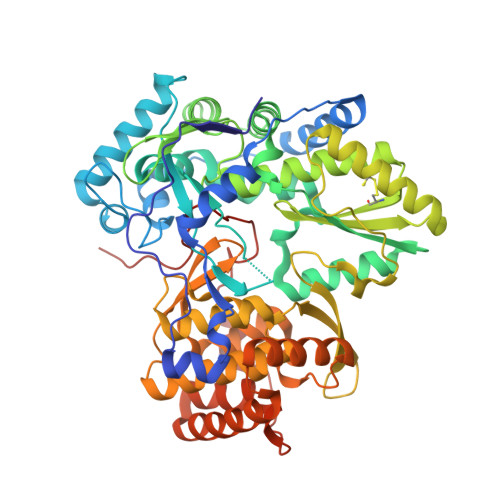I. Novel HCV NS5B polymerase inhibitors: discovery of indole 2-carboxylic acids with C3-heterocycles.
Anilkumar, G.N., Lesburg, C.A., Selyutin, O., Rosenblum, S.B., Zeng, Q., Jiang, Y., Chan, T.Y., Pu, H., Vaccaro, H., Wang, L., Bennett, F., Chen, K.X., Duca, J., Gavalas, S., Huang, Y., Pinto, P., Sannigrahi, M., Velazquez, F., Venkatraman, S., Vibulbhan, B., Agrawal, S., Butkiewicz, N., Feld, B., Ferrari, E., He, Z., Jiang, C.K., Palermo, R.E., McMonagle, P., Huang, H.C., Shih, N.Y., Njoroge, G., Kozlowski, J.A.(2011) Bioorg Med Chem Lett 21: 5336-5341
- PubMed: 21840715
- DOI: https://doi.org/10.1016/j.bmcl.2011.07.021
- Primary Citation of Related Structures:
3SKA, 3SKE, 3SKH - PubMed Abstract:
SAR development of indole-based palm site inhibitors of HCV NS5B polymerase exemplified by initial indole lead 1 (NS5B IC(50)=0.9 μM, replicon EC(50)>100 μM) is described. Structure-based drug design led to the incorporation of novel heterocyclic moieties at the indole C3-position which formed a bidentate interaction with the protein backbone. SAR development resulted in leads 7q (NS5B IC(50)=0.032 μM, replicon EC(50)=1.4 μM) and 7r (NS5B IC(50)=0.017 μM, replicon EC(50)=0.3 μM) with improved enzyme and replicon activity.
Organizational Affiliation:
Merck Research Laboratories, 2015 Galloping Hill Road, Kenilworth, NJ 07033, USA. gopinadhan.anilkumar@merck.com
















